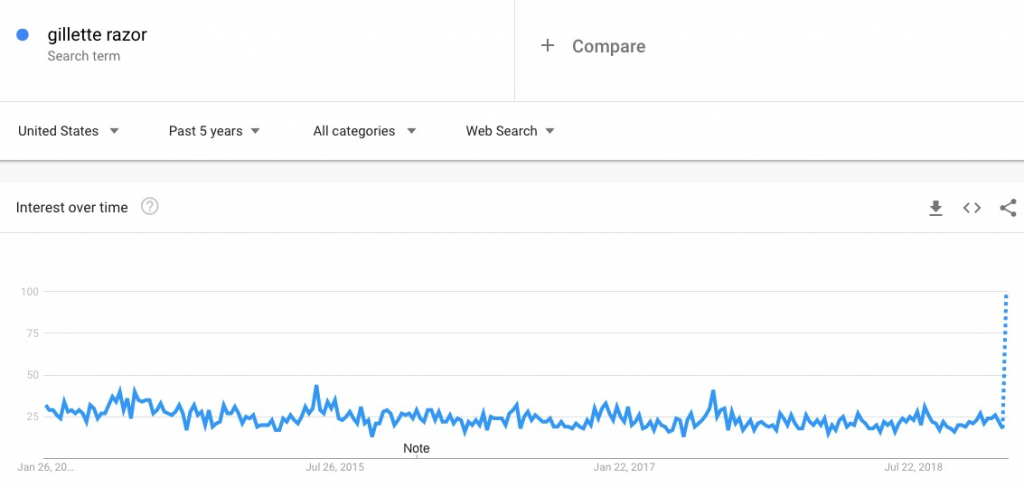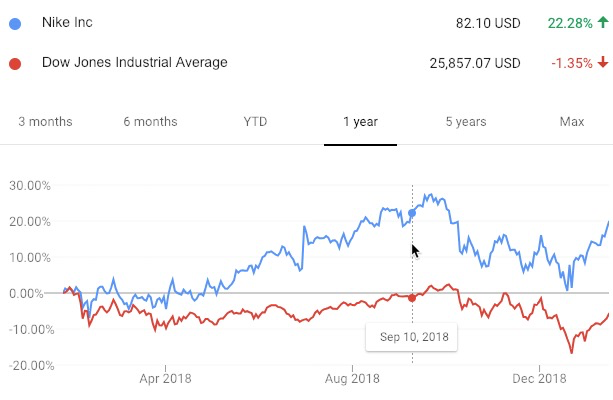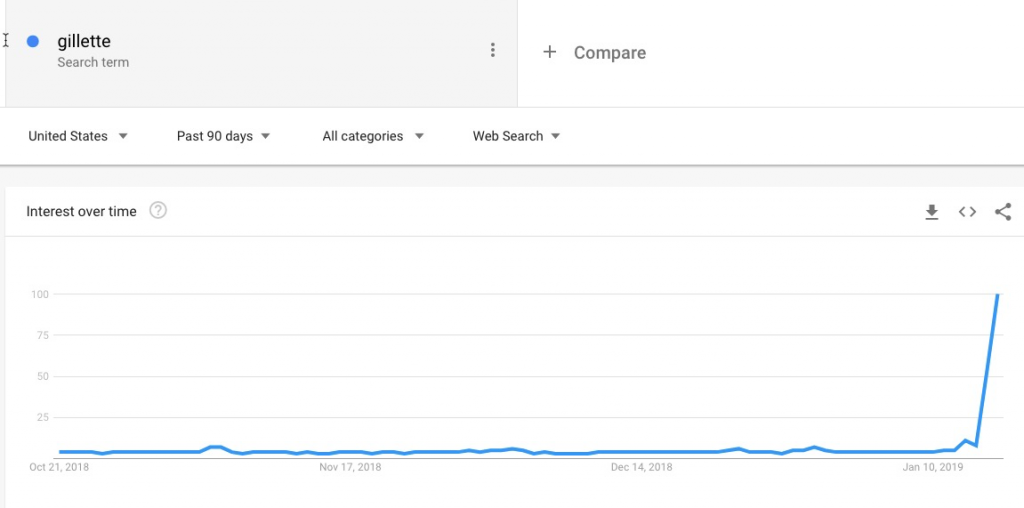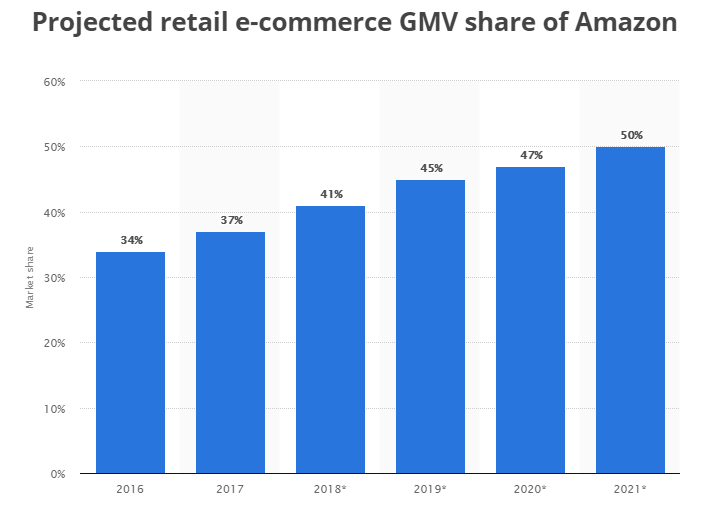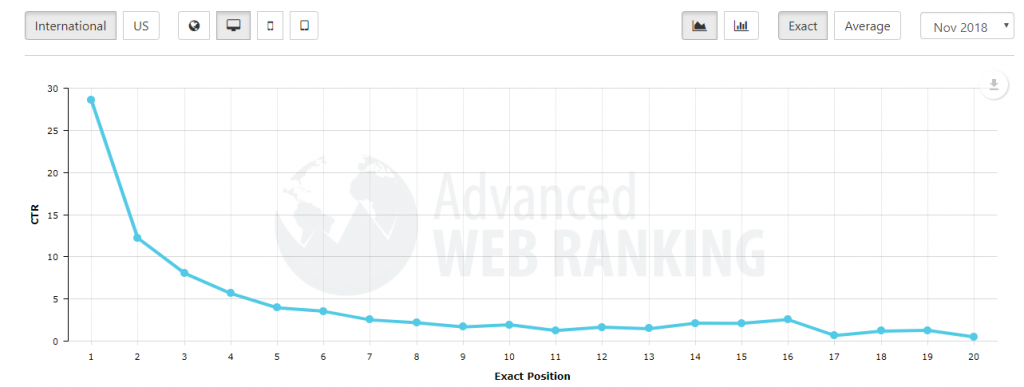Posted by BritneyMuller
In Chapter 6 of the new Beginner's Guide to SEO, we'll be covering the dos and don'ts of link building and ways your site can build its authority. If you missed them, we've got the drafts of our outline, Chapter One, Chapter Two, Chapter Three, Chapter Four, and Chapter Five for your reading pleasure. Be sure to let us know what you think of Chapter 6 in the comments!
Chapter 6: Link Building & Establishing Authority
Turn up the volume.
You've created content that people are searching for, that answers their questions, and that search engines can understand, but those qualities alone don't mean it'll rank. To outrank the rest of the sites with those qualities, you have to establish authority. That can be accomplished by earning links from authoritative websites, building your brand, and nurturing an audience who will help amplify your content.
Google has confirmed that links and quality content (which we covered back in Chapter 4) are two of the three most important ranking factors for SEO. Trustworthy sites tend to link to other trustworthy sites, and spammy sites tend to link to other spammy sites. But what is a link, exactly? How do you go about earning them from other websites? Let's start with the basics.
What are links?
Inbound links, also known as backlinks or external links, are HTML hyperlinks that point from one website to another. They're the currency of the Internet, as they act a lot like real-life reputation. If you went on vacation and asked three people (all completely unrelated to one another) what the best coffee shop in town was, and they all said, "Cuppa Joe on Main Street," you would feel confident that Cuppa Joe is indeed the best coffee place in town. Links do that for search engines.
Since the late 1990s, search engines have treated links as votes for popularity and importance on the web.
Internal links, or links that connect internal pages of the same domain, work very similarly for your website. A high amount of internal links pointing to a particular page on your site will provide a signal to Google that the page is important, so long as it's done naturally and not in a spammy way.
The engines themselves have refined the way they view links, now using algorithms to evaluate sites and pages based on the links they find. But what's in those algorithms? How do the engines evaluate all those links? It all starts with the concept of E-A-T.
You are what you E-A-T
Google's Search Quality Rater Guidelines put a great deal of importance on the concept of E-A-T — an acronym for expert, authoritative, and trustworthy. Sites that don't display these characteristics tend to be seen as lower-quality in the eyes of the engines, while those that do are subsequently rewarded. E-A-T is becoming more and more important as search evolves and increases the importance of solving for user intent.
Creating a site that's considered expert, authoritative, and trustworthy should be your guiding light as you practice SEO. Not only will it simply result in a better site, but it's future-proof. After all, providing great value to searchers is what Google itself is trying to do.
E-A-T and links to your site
The more popular and important a site is, the more weight the links from that site carry. A site like Wikipedia, for example, has thousands of diverse sites linking to it. This indicates it provides lots of expertise, has cultivated authority, and is trusted among those other sites.
To earn trust and authority with search engines, you'll need links from websites that display the qualities of E-A-T. These don't have to be Wikipedia-level sites, but they should provide searchers with credible, trustworthy content.
- Tip: Moz has proprietary metrics to help you determine how authoritative a site is: Domain Authority, Page Authority, and Spam Score. In general, you'll want links from sites with a higher Domain Authority than your sites.
Followed vs. nofollowed links
Remember how links act as votes? The rel=nofollow attribute (pronounced as two words, "no follow") allows you to link to a resource while removing your "vote" for search engine purposes.
Just like it sounds, "nofollow" tells search engines not to follow the link. Some engines still follow them simply to discover new pages, but these links don't pass link equity (the "votes of popularity" we talked about above), so they can be useful in situations where a page is either linking to an untrustworthy source or was paid for or created by the owner of the destination page (making it an unnatural link).
Say, for example, you write a post about link building practices, and want to call out an example of poor, spammy link building. You could link to the offending site without signaling to Google that you trust it.
Standard links (ones that haven't had nofollow added) look like this:
<a href="https://moz.com">I love Moz</a>
Nofollow link markup looks like this:
<a href="https://moz.com" rel="nofollow">I love Moz</a>
|
If follow links pass all the link equity, shouldn't that mean you want only follow links?
Not necessarily. Think about all the legitimate places you can create links to your own website: a Facebook profile, a Yelp page, a Twitter account, etc. These are all natural places to add links to your website, but they shouldn't count as votes for your website. (Setting up a Twitter profile with a link to your site isn't a vote from Twitter that they like your site.)
It's natural for your site to have a balance between nofollowed and followed backlinks in its link profile (more on link profiles below). A nofollow link might not pass authority, but it could send valuable traffic to your site and even lead to future followed links.
|
- Tip: Use the MozBar extension for Google Chrome to highlight links on any page to find out whether they're nofollow or follow without ever having to view the source code!
Your link profile
Your link profile is an overall assessment of all the inbound links your site has earned: the total number of links, their quality (or spamminess), their diversity (is one site linking to you hundreds of times, or are hundreds of sites linking to you once?), and more. The state of your link profile helps search engines understand how your site relates to other sites on the Internet. There are various SEO tools that allow you to analyze your link profile and begin to understand its overall makeup.
|
How can I see which inbound links point to my website?
Visit Moz Link Explorer and type in your site's URL. You'll be able to see how many and which websites are linking back to you.
|
What are the qualities of a healthy link profile?
When people began to learn about the power of links, they began manipulating them for their benefit. They'd find ways to gain artificial links just to increase their search engine rankings. While these dangerous tactics can sometimes work, they are against Google's terms of service and can get a website deindexed (removal of web pages or entire domains from search results). You should always try to maintain a healthy link profile.
A healthy link profile is one that indicates to search engines that you're earning your links and authority fairly. Just like you shouldn't lie, cheat, or steal, you should strive to ensure your link profile is honest and earned via your hard work.
Links are earned or editorially placed
Editorial links are links added naturally by sites and pages that want to link to your website.
The foundation of acquiring earned links is almost always through creating high-quality content that people genuinely wish to reference. This is where creating 10X content (a way of describing extremely high-quality content) is essential! If you can provide the best and most interesting resource on the web, people will naturally link to it.
Naturally earned links require no specific action from you, other than the creation of worthy content and the ability to create awareness about it.
- Tip: Earned mentions are often unlinked! When websites are referring to your brand or a specific piece of content you've published, they will often mention it without linking to it. To find these earned mentions, use Moz's Fresh Web Explorer. You can then reach out to those publishers to see if they'll update those mentions with links.
Links are relevant and from topically similar websites
Links from websites within a topic-specific community are generally better than links from websites that aren't relevant to your site. If your website sells dog houses, a link from the Society of Dog Breeders matters much more than one from the Roller Skating Association. Additionally, links from topically irrelevant sources can send confusing signals to search engines regarding what your page is about.
- Tip: Linking domains don't have to match the topic of your page exactly, but they should be related. Avoid pursuing backlinks from sources that are completely off-topic; there are far better uses of your time.
Anchor text is descriptive and relevant, without being spammy
Anchor text helps tell Google what the topic of your page is about. If dozens of links point to a page with a variation of a word or phrase, the page has a higher likelihood of ranking well for those types of phrases. However, proceed with caution! Too many backlinks with the same anchor text could indicate to the search engines that you're trying to manipulate your site's ranking in search results.
|
Consider this. You ask ten separate friends at separate times how their day was going, and they each responded with the same phrase:
"Great! I started my day by walking my dog, Peanut, and then had a picante beef Top Ramen for lunch."
That's strange, and you'd be quite suspicious of your friends. The same goes for Google. Describing the content of the target page with the anchor text helps them understand what the page is about, but the same description over and over from multiple sources starts to look suspicious. Aim for relevance; avoid spam.
|
- Tip: Use the "Anchor Text" report in Moz's Link Explorer to see what anchor text other websites are using to link to your content.
Links send qualified traffic to your site
Link building should never be solely about search engine rankings. Esteemed SEO and link building thought leader Eric Ward used to say that you should build your links as though Google might disappear tomorrow. In essence, you should focus on acquiring links that will bring qualified traffic to your website — another reason why it's important to acquire links from relevant websites whose audience would find value in your site, as well.
- Tip: Use the "Referral Traffic" report in Google Analytics to evaluate websites that are currently sending you traffic. How can you continue to build relationships with similar types of websites?
Link building don'ts & things to avoid
Spammy link profiles are just that: full of links built in unnatural, sneaky, or otherwise low-quality ways. Practices like buying links or engaging in a link exchange might seem like the easy way out, but doing so is dangerous and could put all of your hard work at risk. Google penalizes sites with spammy link profiles, so don't give in to temptation.
A guiding principle for your link building efforts is to never try to manipulate a site's ranking in search results. But isn't that the entire goal of SEO? To increase a site's ranking in search results? And herein lies the confusion. Google wants you to earn links, not build them, but the line between the two is often blurry. To avoid penalties for unnatural links (known as "link spam"), Google has made clear what should be avoided.
Purchased links
Google and Bing both seek to discount the influence of paid links in their organic search results. While a search engine can't know which links were earned vs. paid for from viewing the link itself, there are clues it uses to detect patterns that indicate foul play. Websites caught buying or selling followed links risk severe penalties that will severely drop their rankings. (By the way, exchanging goods or services for a link is also a form of payment and qualifies as buying links.)
Link exchanges / reciprocal linking
If you've ever received a "you link to me and I'll link you you" email from someone you have no affiliation with, you've been targeted for a link exchange. Google's quality guidelines caution against "excessive" link exchange and similar partner programs conducted exclusively for the sake of cross-linking, so there is some indication that this type of exchange on a smaller scale might not trigger any link spam alarms.
It is acceptable, and even valuable, to link to people you work with, partner with, or have some other affiliation with and have them link back to you.
It's the exchange of links at mass scale with unaffiliated sites that can warrant penalties.
Low-quality directory links
These used to be a popular source of manipulation. A large number of pay-for-placement web directories exist to serve this market and pass themselves off as legitimate, with varying degrees of success. These types of sites tend to look very similar, with large lists of websites and their descriptions (typically, the site's critical keyword is used as the anchor text to link back to the submittor's site).
There are many more manipulative link building tactics that search engines have identified. In most cases, they have found algorithmic methods for reducing their impact. As new spam systems emerge, engineers will continue to fight them with targeted algorithms, human reviews, and the collection of spam reports from webmasters and SEOs. By and large, it isn't worth finding ways around them.
How to build high-quality backlinks
Link building comes in many shapes and sizes, but one thing is always true: link campaigns should always match your unique goals. With that said, there are some popular methods that tend to work well for most campaigns. This is not an exhaustive list, so visit Moz's blog posts on link building for more detail on this topic.
Find customer and partner links
If you have partners you work with regularly, or loyal customers that love your brand, there are ways to earn links from them with relative ease. You might send out partnership badges (graphic icons that signify mutual respect), or offer to write up testimonials of their products. Both of those offer things they can display on their website along with links back to you.
Publish a blog
This content and link building strategy is so popular and valuable that it's one of the few recommended personally by the engineers at Google. Blogs have the unique ability to contribute fresh material on a consistent basis, generate conversations across the web, and earn listings and links from other blogs.
Careful, though — you should avoid low-quality guest posting just for the sake of link building. Google has advised against this and your energy is better spent elsewhere.
Create unique resources
Creating unique, high quality resources is no easy task, but it's well worth the effort. High quality content that is promoted in the right ways can be widely shared. It can help to create pieces that have the following traits:
Creating a resource like this is a great way to attract a lot of links with one page. You could also create a highly-specific resource — without as broad of an appeal — that targeted a handful of websites. You might see a higher rate of success, but that approach isn't as scalable.
Users who see this kind of unique content often want to share it with friends, and bloggers/tech-savvy webmasters who see it will often do so through links. These high quality, editorially earned votes are invaluable to building trust, authority, and rankings potential.
Build resource pages
Resource pages are a great way to build links. However, to find them you'll want to know some Advanced Google operators to make discovering them a bit easier.
For example, if you were doing link building for a company that made pots and pans, you could search for: cooking intitle:"resources" and see which pages might be good link targets.
This can also give you great ideas for content creation — just think about which types of resources you could create that these pages would all like to reference/link to.
Get involved in your local community
For a local business (one that meets its customers in person), community outreach can result in some of the most valuable and influential links.
- Engage in sponsorships and scholarships.
- Host or participate in community events, seminars, workshops, and organizations.
- Donate to worthy local causes and join local business associations.
- Post jobs and offer internships.
- Promote loyalty programs.
- Run a local competition.
- Develop real-world relationships with related local businesses to discover how you can team up to improve the health of your local economy.
All of these smart and authentic strategies provide good local link opportunities.
Refurbish top content
You likely already know which of your site's content earns the most traffic, converts the most customers, or retains visitors for the longest amount of time.
Take that content and refurbish it for other platforms (Slideshare, YouTube, Instagram, Quora, etc.) to expand your acquisition funnel beyond Google.
You can also dust off, update, and simply republish older content on the same platform. If you discover that a few trusted industry websites all linked to a popular resource that's gone stale, update it and let those industry websites know — you may just earn a good link.
You can also do this with images. Reach out to websites that are using your images and not citing/linking back to you and ask if they'd mind including a link.
Be newsworthy
Earning the attention of the press, bloggers, and news media is an effective, time-honored way to earn links. Sometimes this is as simple as giving something away for free, releasing a great new product, or stating something controversial. Since so much of SEO is about creating a digital representation of your brand in the real world, to succeed in SEO, you have to be a great brand.
Be personal and genuine
The most common mistake new SEOs make when trying to build links is not taking the time to craft a custom, personal, and valuable initial outreach email. You know as well as anyone how annoying spammy emails can be, so make sure yours doesn't make people roll their eyes.
Your goal for an initial outreach email is simply to get a response. These tips can help:
- Make it personal by mentioning something the person is working on, where they went to school, their dog, etc.
- Provide value. Let them know about a broken link on their website or a page that isn't working on mobile.
- Keep it short.
- Ask one simple question (typically not for a link; you'll likely want to build a rapport first).
|
Pro Tip:
Earning links can be very resource-intensive, so you'll likely want to measure your success to prove the value of those efforts.
Metrics for link building should match up with the site's overall KPIs. These might be sales, email subscriptions, page views, etc. You should also evaluate Domain and/or Page Authority scores, the ranking of desired keywords, and the amount of traffic to your content — but we'll talk more about measuring the success of your SEO campaigns in Chapter 7.
|
Beyond links: How awareness, amplification, and sentiment impact authority
A lot of the methods you'd use to build links will also indirectly build your brand. In fact, you can view link building as a great way to increase awareness of your brand, the topics on which you're an authority, and the products or services you offer.
Once your target audience knows about you and you have valuable content to share, let your audience know about it! Sharing your content on social platforms will not only make your audience aware of your content, but it can also encourage them to amplify that awareness to their own networks, thereby extending your own reach.
Are social shares the same as links? No. But shares to the right people can result in links. Social shares can also promote an increase in traffic and new visitors to your website, which can grow brand awareness, and with a growth in brand awareness can come a growth in trust and links. The connection between social signals and rankings seems indirect, but even indirect correlations can be helpful for informing strategy.
Trustworthiness goes a long way
For search engines, trust is largely determined by the quality and quantity of the links your domain has earned, but that's not to say that there aren't other factors at play that can influence your site's authority. Think about all the different ways you come to trust a brand:
- Awareness (you know they exist)
- Helpfulness (they provide answers to your questions)
- Integrity (they do what they say they will)
- Quality (their product or service provides value; possibly more than others you've tried)
- Continued value (they continue to provide value even after you've gotten what you needed)
- Voice (they communicate in unique, memorable ways)
- Sentiment (others have good things to say about their experience with the brand)
That last point is what we're going to focus on here. Reviews of your brand, its products, or its services can make or break a business.
In your effort to establish authority from reviews, follow these review rules of thumb:
- Never pay any individual or agency to create a fake positive review for your business or a fake negative review of a competitor.
- Don't review your own business or the businesses of your competitors. Don't have your staff do so either.
- Never offer incentives of any kind in exchange for reviews.
- All reviews must be left directly by customers in their own accounts; never post reviews on behalf of a customer or employ an agency to do so.
- Don't set up a review station/kiosk in your place of business; many reviews stemming from the same IP can be viewed as spam.
- Read the guidelines of each review platform where you're hoping to earn reviews.
Be aware that review spam is a problem that's taken on global proportions, and that violation of governmental truth-in-advertising guidelines has led to legal prosecution and heavy fines. It's just too dangerous to be worth it. Playing by the rules and offering exceptional customer experiences is the winning combination for building both trust and authority over time.
Authority is built when brands are doing great things in the real-world, making customers happy, creating and sharing great content, and earning links from reputable sources.
In the next and final section, you'll learn how to measure the success of all your efforts, as well as tactics for iterating and improving upon them. Onward!
Sign up for The Moz Top 10, a semimonthly mailer updating you on the top ten hottest pieces of SEO news, tips, and rad links uncovered by the Moz team. Think of it as your exclusive digest of stuff you don't have time to hunt down but want to read!

from The Moz Blog http://bit.ly/2sUNZk8
via
IFTTT
